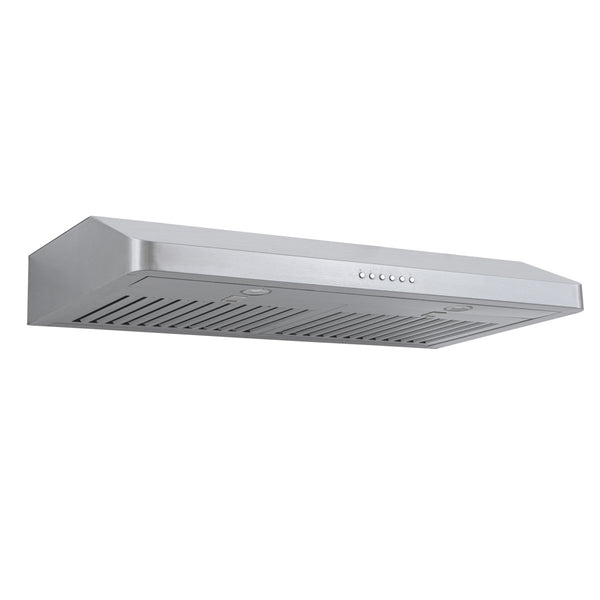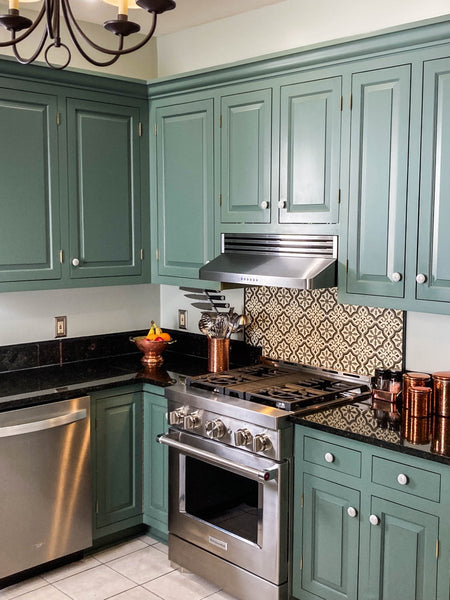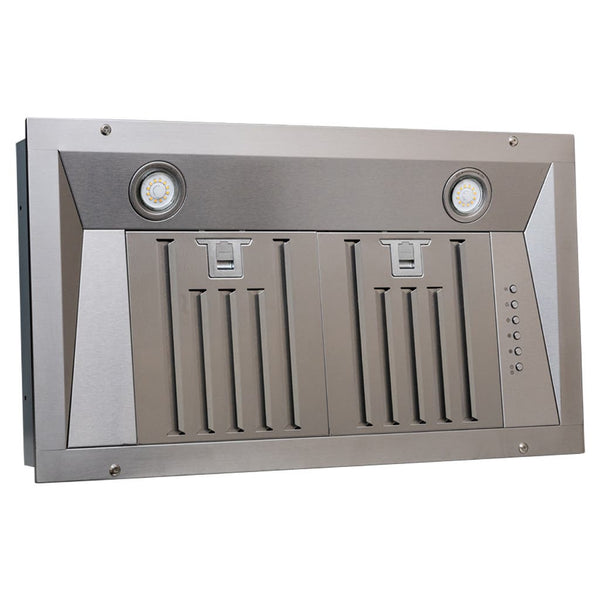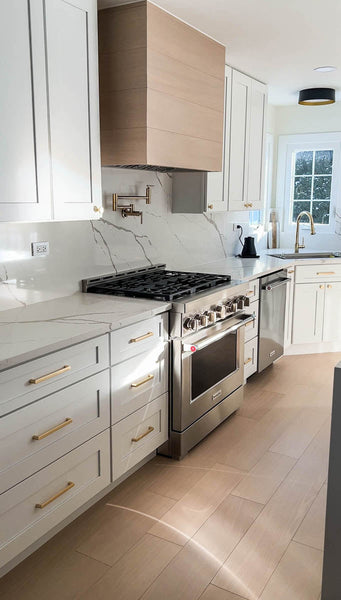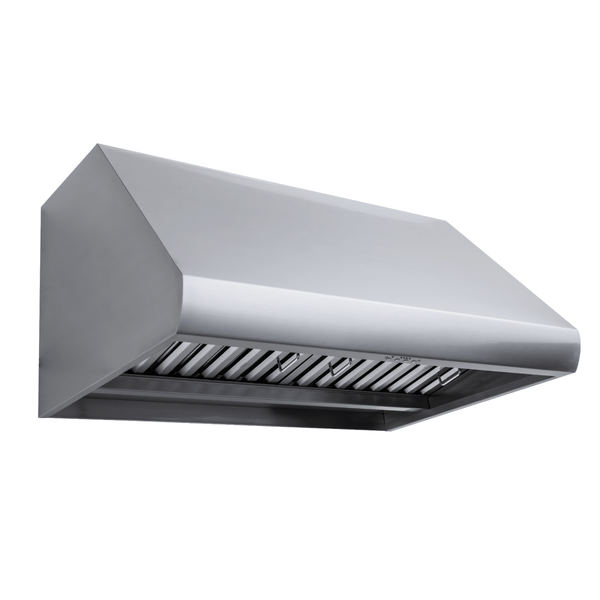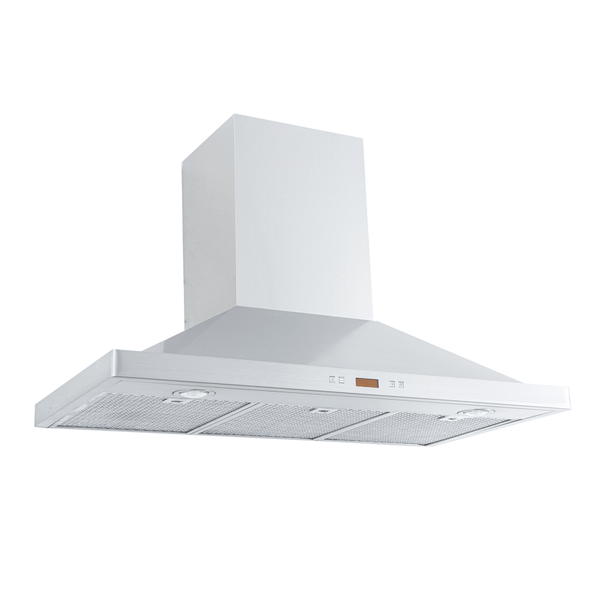Table of Contents
Do you know how to clean a stainless steel range hood? Have you ever wondered how long it will take or how to start? It's not as hard as you might think!
We’ll show you three different methods to clean everything on your stainless steel range hood, from a little dust to the toughest stains.
Important Cleaning Tips
Before you get started, follow these two important tips:
1. Never use bleach or abrasive cleaners while cleaning stainless steel. Even though stainless steel is well-known for its durability, it is possible to damage it using harsh chemicals and scouring pads. Some chemicals such as those used in oven cleaners may discolor the finish. Coarse sponges, steel wool, and wire brushes may scratch a brushed stainless steel finish.
2. Always scrub in the direction of the grain on the brushed finish. The grain refers to the faint directional lines running through the metal. Wiping against the grain can leave residue behind in the small crevices of the stainless steel, which may scratch the finish. Scrubbing with the grain will help preserve the beautiful finish.
1. Everyday Cleaning

What You Need
- One of these three cleaners: Windex, 1:1 vinegar and water solution, or dish soap and water
- Microfiber cloth
- Basic glass cleaner (optional for light or regular cleaning, such as removing fingerprints)
Basic glass cleaner can be used for light or regular cleaning, such as removing fingerprints. You can purchase a glass cleaner or save some money and easily make your own at home.
In a spray bottle, combine one part water and one part vinegar. Simply spray your glass cleaner on the range hood then wipe it off with a microfiber cloth in the direction of the grain.
Another option for regular cleaning is to mix warm water and a bit of mild dish detergent. Then scrub the range hood with a soft sponge or microfiber cloth.
After scrubbing, rinse the soapy water off thoroughly with clean water. Then, make sure to wipe it completely dry so you aren't left with water spots.
2. Tough-to-Clean Areas

What You Need
- Acetone or kitchen degreaser
- Microfiber cloth
- Dish soap and water
- Dry cloth
To address tough oily spots and adhesives, you need a stronger product such as acetone, the key ingredient in nail polish remover and paint thinners.
Before you use acetone, you may want to open a window for air circulation.
Wet your cloth with the acetone and, going with the grain, begin scrubbing the areas with built-up grease. Wipe off all the cleaner and continue to perform these steps again until the greasy areas have been removed.
Once all the oily areas have been cleaned off, use a soft cloth with a solution of warm water and mild dish soap to remove the acetone and greasy residue.
Rinse the soapy water off with clean water and dry it off immediately with a clean towel.
You can also try a kitchen degreaser. Spray on the degreaser and allow it to sit and work for about 15 minutes.
Then, rinse all the cleaner off with warm water and wipe the hood dry with a microfiber cloth.
3. Very Difficult Stains
What You Need
- No-grit Soft Scrub (without bleach)
- White scotch brite pad
- Old toothbrush
- Microfiber cloth
If you have an exceptionally stubborn spot that doesn’t respond to the methods mentioned above, try a Soft Scrub cleaner without bleach. This one from Amazon works great!
Use a white scotch brite pad to break down tough grease stains. It’s the lightest pad which is best for dissolving difficult stains without scratching the hood.
Apply the Soft Scrub to the cleaning pad and begin wiping your stainless steel range hood with long strokes back and forth in the direction of the grain.
If you need a more focused scrubbing tool, an old soft-bristled toothbrush will do the trick.
Always be thorough about wiping all the cleaner off once you’re done scrubbing.
In Summary
Hopefully one of these three methods works well for you.
Remember, for everyday cleaning, use glass cleaner, a vinegar and water solution, or dish soap and water.
For tough grease, use a kitchen degreaser or acetone.
For the most stubborn stains, try a no-grit Soft Scrub.
If you want to go the extra mile, add one or two drops of olive oil or coconut oil to your polishing cloth and rub in the direction of the grain after cleaning. This will restore a shiny finish and help avoid streaks—just be careful not to use too much oil, or you might end up with a sticky mess.
Remember, some parts of your range hood may have the stainless steel grain running in different directions. Run your finger across the hood to determine the grain's direction; if you encounter resistance, you're moving against it.
Cleaning your range hood is essential to keep it looking good and your kitchen smelling fresh. Depending on your cooking habits, you may need to clean it daily to weekly, with a more intensive cleaning every month or two. The more frequently you clean, the less you'll have to deal with heavy grease build-up and stubborn stains.
As long as you follow these methods, your stainless steel range hood will look as good as new. Thanks for reading!
